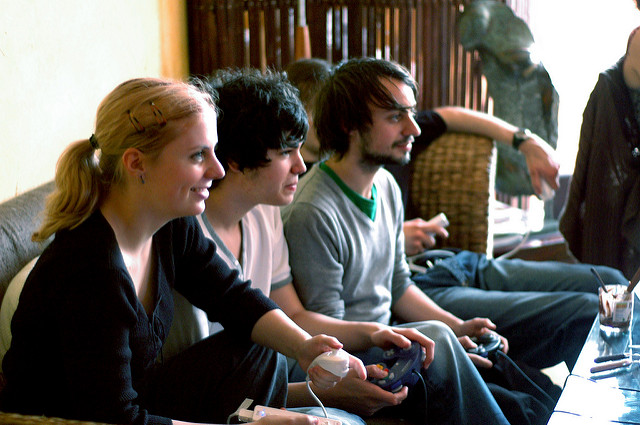
The release of the video game Resident Evil 7: Biohazard represents a greater renewed interest in horror media. While horror films are the best return on investment in Hollywood, horror video games have also seen a resurgence in more recent years. The popularity of this gaming genre is explored by sociologist Margee Kerr, as she explains to The Observer:
“If we were really running for our life, we’re not thinking critically … It’s really the ability to know that we’re safe while we’re doing this, we can enjoy these reactions. It feels invigorating — like we’re primal. Like we’re in that animal state again. A good scary game can hit that sweet spot where the stress is advantageous to gameplay. We hyperfocus on the game. It can be really rewarding.”
In other words, we like to be scared in horror games; and more importantly, we like to be scared with others. One of the most popular ways of consuming horror games is with other people, and this is often achieved by watching Let’s Play videos on YouTube. The idea behind these videos is that you’re watching a content creator’s gameplay as they played it — often accompanied with a recording of their face for all of their reactions. It essentially allows people to experience these horror games with other people, regardless of their access to gaming consoles or other players. This fulfills an important aspect of horror games — getting through struggles. As Kerr explains:
“The goal-directed behavior and having a common goal — we bond closely with others when we’re in stressful situations … We feel more united with people we go through tough times with. I’ve heard from a lot of people that playing a game with someone opens them up. They do end up talking to their friends on a deeper level.”
So next time you pop that disc into your game system, go ahead and invite some people over — you might get more out of it if you share your scare with friends.

Comments 11
James Williams — April 16, 2020
Author, I thank you for this post. I have been a fan of video games since childhood and I see nothing wrong with that, but my parents did not think so and were against it, but recently everything has changed. I found a way to make money using https://csgobettings.com/csgoempire-referral-codes/ on this site I use various top-end betting platforms and so my favorite video game began to bring me good money and now my parents changed their minds.
DelbertHines — September 22, 2020
Games always help me reduce the pressure in my life. That is why I often collect attractive games at HapMod.com
lisa — December 9, 2020
I also like the Olympics, and I don’t really like sports in general. I agree with you that there’s something special about these games. I always try to watch the opening ceremony at least, but I missed it this year. 😛 And how amazing for you to see the Olympic flame passing through Verona! I’d love to see that!Nintendo Switch Accessories
Micky Morry — April 30, 2021
I do not like video games as they are not only scary but useless. I prefer to play online casinos as I can get some extra cash. In order to get the best £1 deposit casino it is obligatory to check the GamblingORB resource that is a great find for every beginner.
Andres Thornton — June 22, 2021
Thank you for sharing, your article is very good. You can download among us hack apk an action game, great entertainment.
Argentics — August 4, 2021
Hi. Thanks for the information. How proud I am that I was involved in these events, albeit indirectly. I am developing computer games, and this is the best job in the world. However, the development of computer games is a large organizational process that needs to be properly directed and adjusted in the future.
Carlopez — November 20, 2021
A od dłuższego czasu gram w kasynach online na prawdziwe pieniądze https://betsafe.net.pl/ i mogę powiedzieć, że więcej wygrałem niż przegrałem. I to nie jest bez znaczenia! Automaty w tym kasynie pomagają mi naprawdę się zrelaksować i odwrócić uwagę nawet od poważnych problemów! Zwłaszcza jeśli to kasyno daje swoim graczom bonusy
Olive españa Long — June 30, 2022
Thank you for sharing minecraft apk gratis a pretty cool and attractive game you can download here for free
craiggardner — December 20, 2022
Not all video games do. There are games that help develop creativity like minecraft apk descargar that is loved by many children
seema — February 4, 2023
Hi. Thanks for the information. How proud I am that I was involved in these events, albeit indirectly. I Retro Bowl am developing computer games, and this is the best job in the world. However, the development of computer games is a large organizational process that needs to be properly directed and adjusted in the future.
seema — February 20, 2023
Hi. Thanks for the information. How proud I am that I was involved in these events, albeit indirectly. I am developing computer games, and this is the best job in the world. However, the SMP Minecraft server plugins development of computer games is a large organizational process that needs to be properly directed and adjusted in the future.